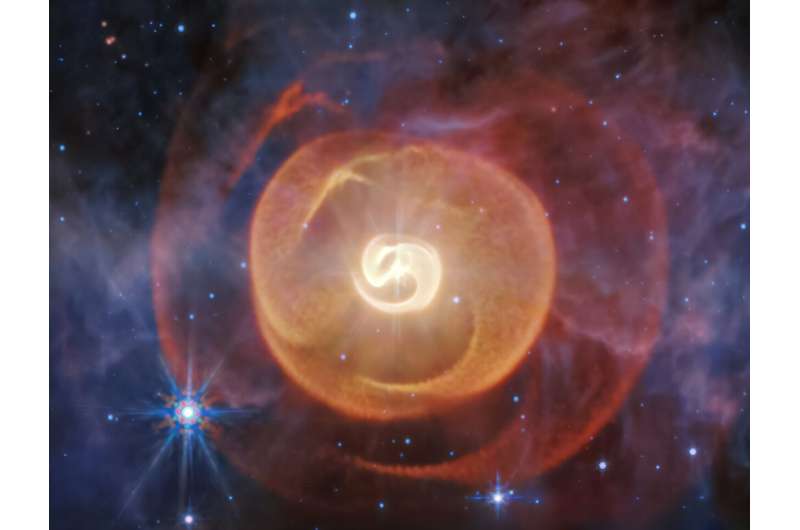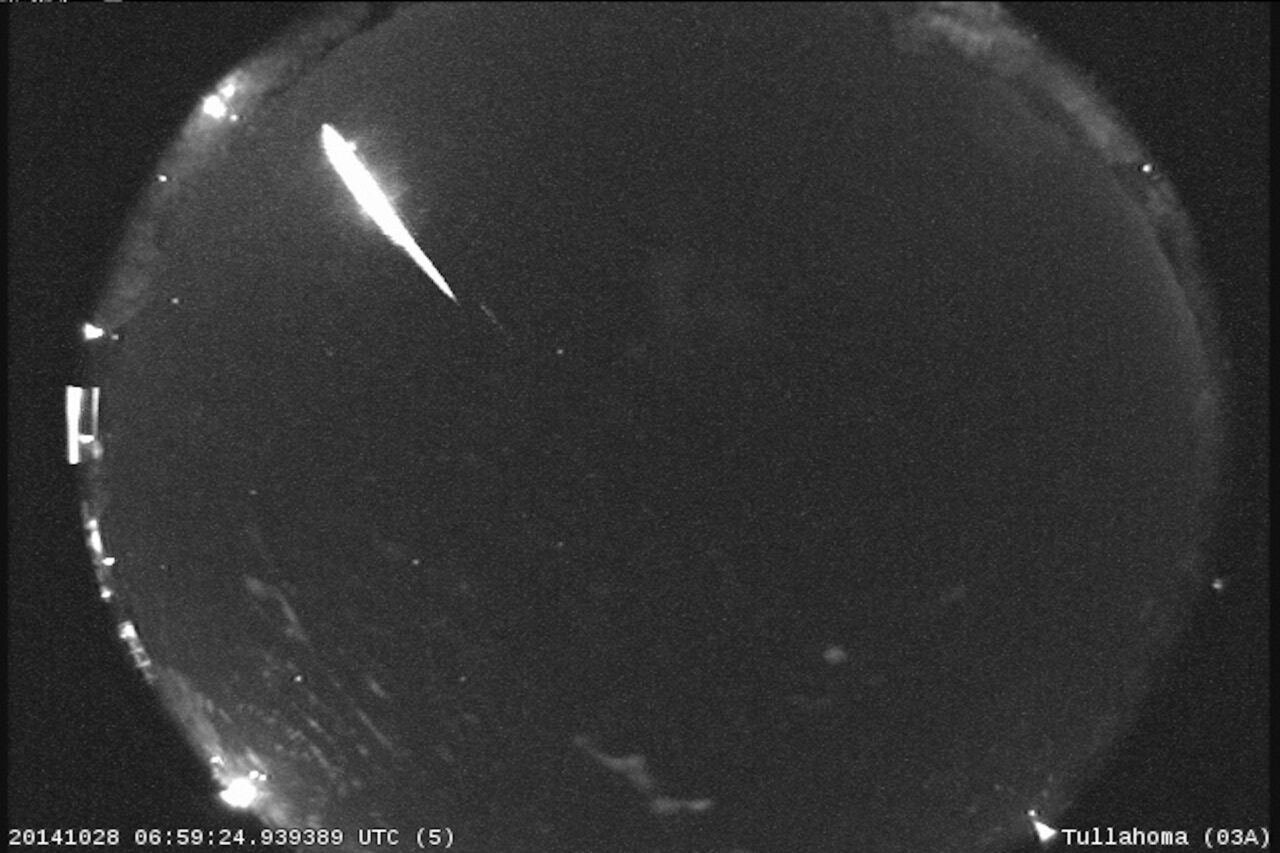NASA’s James Webb Space Telescope has captured a groundbreaking mid-infrared image of a remarkable system known as Apep, showcasing four spiraling dust shells. These shells, formed by two aging Wolf-Rayet stars, were previously undetected beyond a single shell in earlier observations. The new image reveals a series of dust spirals, expanding in a precise pattern over the last 700 years.
Prior to Webb’s observations, ground-based telescopes had failed to identify these outer shells, despite the hypothesis of their existence. The latest findings indicate that the two Wolf-Rayet stars in Apep orbit each other approximately once every 190 years. During their close approach, which lasts for 25 years, they produce significant amounts of dust.
New Insights into the Apep System
The data collected by Webb, in conjunction with observations from the European Southern Observatory’s Very Large Telescope in Chile, has confirmed that three stars are gravitationally bound in this system. A third, more massive supergiant star interacts with the dust emitted from the Wolf-Rayet stars, creating unique structures through its gravitational influence. This interaction results in distinctive holes within the expanding dust clouds, visible in Webb’s image.
Lead author Yinuo Han, a postdoctoral researcher at Caltech, described the impact of Webb’s observations, stating, “Looking at Webb’s new observations was like walking into a dark room and switching on the light—everything came into view.” Han’s insights are published in The Astrophysical Journal, alongside a complementary paper by Ryan White, a Ph.D. student at Macquarie University in Sydney, Australia.
By integrating precise measurements from Webb’s image with data on the speed of the dust shells gathered over eight years, Han and White have refined the orbital characteristics of the Wolf-Rayet stars. White noted, “This is a one-of-a-kind system with an incredibly rare orbital period.”
Understanding Dust Formation and Dynamics
The process by which the two Wolf-Rayet stars create dust involves their powerful stellar winds colliding as they near one another. This interaction results in the formation of carbon-rich dust that is expelled at astonishing speeds of 1,200 to 2,000 miles per second (2,000 to 3,000 kilometers per second). The dust produced is exceptionally dense and largely consists of amorphous carbon, which retains heat even at significant distances from the stars.
Han explained that the specific composition of the dust contributes to its visibility in Webb’s images. The faint light emitted by the tiny dust grains can only be detected from space, emphasizing the critical role of Webb’s Mid-Infrared Instrument in revealing these complex structures.
The influence of the third star in the Apep system is evident as it has carved out distinctive cavities in the dust. Observations show a V-shaped pattern in the dust shells, indicating the precise points where the supergiant star has interacted with the material ejected by the Wolf-Rayet stars. White expressed his surprise at the clarity of the simulations, stating that Webb provided the definitive evidence for the third star’s gravitational connection to the system.
Though the presence of the third star was initially identified by the VLT in 2018, Webb’s data has allowed researchers to develop a more accurate geometric model of the Apep system, further elucidating its dynamics.
The future of Apep’s unique stars remains a topic of interest. The Wolf-Rayet stars, once significantly more massive than their supergiant companion, are expected to explode as supernovae, dispersing their elements into space. This event could also produce a gamma-ray burst, one of the universe’s most powerful phenomena, before potentially evolving into black holes.
Wolf-Rayet stars are rare in the universe, with only about 1,000 estimated to exist within our Milky Way galaxy, which contains hundreds of billions of stars. Apep stands out as the only known system with two Wolf-Rayet stars of this type, making these findings particularly significant for astrophysics.
As researchers continue to analyze the data from Webb, they aim to determine the precise distance of the Apep system from Earth, a mystery that remains unsolved and will require additional observations.
For those interested in the latest advancements in science and space exploration, subscribing to reputable sources will provide ongoing insights into groundbreaking research and discoveries.







